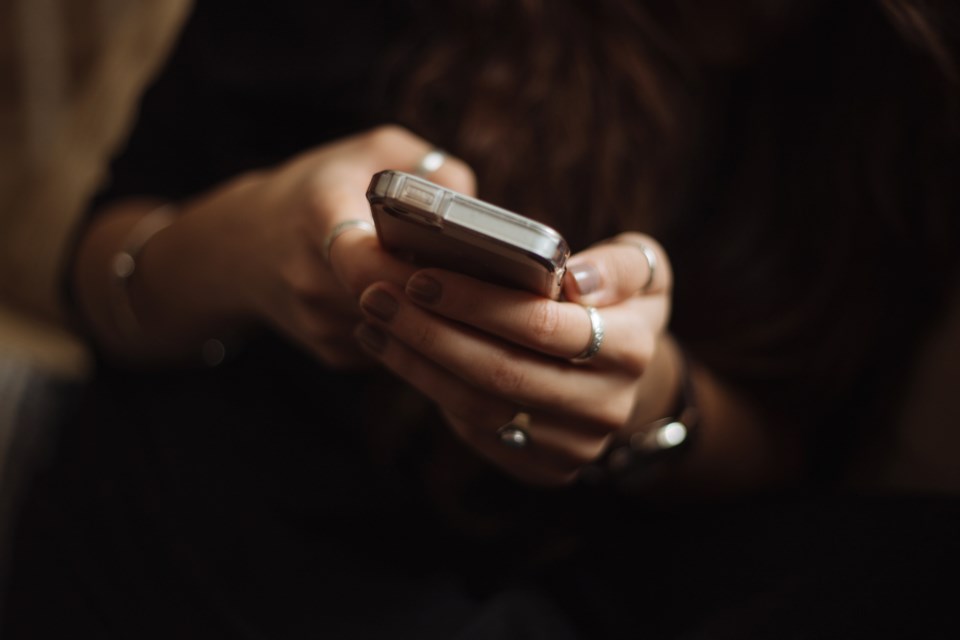They’re improving cellphone service along the highway to Port Renfrew, and I am brokenhearted.
This is selfish, I know. Logic says breathing life into the dead zones west of Sooke is a good thing, particularly on that sketchy roller-coaster stretch where the guardrail graffiti used to read “HANG ON TO YER BEER!” as the pavement threatened to sling you into the strait. Safety first.
Nonetheless, word of the impending upgrades — the work, costing $5 million, is supposed to be done by Halloween — made me sad. Why? Because there’ll be one less place to slip the electronic leash.
I mean, for years, the high point of any Vancouver Island road trip was always that place — north of Campbell River, say — where cell service suddenly disappeared, poof, just like Stephen Harper or the ice-bucket challenge.
If you really had to connect, you could swing down into Sayward and, hanging off the porch of the rec centre with one hand and doing the Statue of Liberty with the other, maybe find one bar of service, but otherwise you couldn’t contact anyone and, more importantly, they couldn’t contact you. That’s when the vacation really began.
Not that I don’t love my phone. I do. Maybe too much.
I spend more time with my phone than anyone else in my life. We go to work together, where our relationship is all business. We go shopping together, comparing prices. At home, we watch hockey side by side on the couch. “I hate to say it, but the Leafs look good,” I’ll tell her, which she’ll confirm by spitting out a bunch of stats on Auston Matthews.
Sometimes, we’ll go for a nice walk on the beach, just the two of us, gazing wistfully across Juan de Fuca Strait until my phone blurts out a “Welcome to AT&T” message, which these days is as close to international travel as we can get.
We also bicker like an old couple, which is what we are. “Yes, I heard you the first time,” I grumble when, impatiently, my phone sends me a second text alert.
Not that there are many second alerts, so accustomed have we all become to leaping up like Pavlov’s dog whenever our phones snap their fingers, demanding attention.
Our hypersensitivity to such demands might be at the root of something known as “phantom vibration syndrome,” in which you feel your phone going off in your pocket even when it isn’t there.
In an article in last week, a fellow named Nick Beare wrote that with almost 90 per cent of Canadians owning a smartphone, this phenomenon (which he said is also known by the wonderful term “fauxcellarm”) is quite common.
Of course, I wouldn’t know what phantom phone syndrome feels like, because my phone is always there, unless I forget it.
It’s easy to know when people have forgotten their phones, because they’ll suddenly sit bolt upright and tell you so: “I think I forgot my phone.”
Then, after slapping their pockets like an astronaut who just realized he left his smokes on Earth, they’ll say it again, except panicked this time, like the mother in Home Alone: “Kevin!” (Some people name their phones).
Reams have been written about the psychology behind this, about our craving for constant connectivity, or FOMO, or our addiction to stimulation. It’s like a fork in a light socket. We can’t let go.
That has been particularly true over the past year, where one of the ironies has been the way inertia and torpor have been fostered by constant anxiety and distraction.
So much information piles in, all of it demanding our immediate attention, that we have trouble getting anything done at all.
Right now, we’re in the middle of a glorious spring, the trees raining pink blossoms, but we barely notice because we’re so deep into the weeds in our dissection of, say, the efficacy rate of AstraZeneca versus Pfizer against the South African variant that the sun can’t penetrate at all.
It has been suggested that this is unhealthy, that my phone and I, just like Ross and Rachel on Friends, need to go on a break. Sure, I reply, you go first. Easier said than done.
Which is why the enforced digital detox of a cell-service dead zone was always such a source of anxiety and relief.


